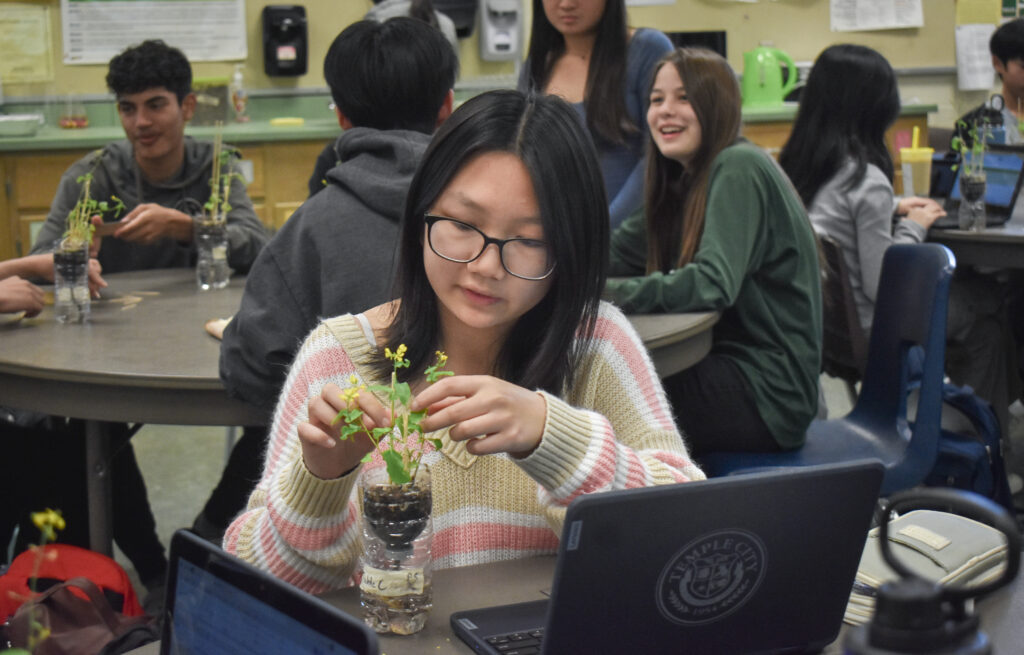By Melody Cen
Staff Writer

Light flows into an antsy classroom, as students await to check on their new plant growth. Excitedly picking up the blossoming plants, they begin to go through a newly established routine of nurturing the plants and recording their observations.
The Fast Plants experiment is a milestone that Ms. Hwang’s Honors Biology class faces every second semester of the school year. To set up the experiment, students form groups of three to four to grow four Fast Plants in six weeks, clocking the growth of their plants and comparing controls with an individualized experiment plant. These changes can vary from nipping the buds of the plants, adding more fertilizer or even singing next to the plant to increase carbon dioxide levels.
The experiment requires four plastic water bottles cut into thirds, with the top third stacked on the bottom third to form a planter. Then, the bottom third is filled with about a centimeter of water to act as a reservoir to self water the plants so they avoid drying up. For the plant itself, students used the top third as the main planter, adding nitrate soil, fertilizer beads and the seeds themselves, repeating the same process for all four plants. With all the plants set up and labeled, either as a control or the experiment, students waited to check up their plants and record data during the first ten minutes of class Monday, Wednesday and Friday to report any new growth or abnormalities.
“Our experiment difference is adding fertilizer to the other two pots”, freshman Myra Deng said. “The hypothesis we created is that the fertilizer pots will grow faster compared to the controlled pots with less soil.”
The assigned chart or graph includes space to record the plant’s height in centimeters, and the leaf quantity, with students also taking weekly update pictures to compare overall growth. Throughout the plant’s life cycle, groups will use their own scientific judgment to gauge if their plant needs more water, fertilizer or soil to help create ideal conditions for their plants to thrive in, systematically placing their plants under UV lights to help facilitate greater growth.
“I think that this experiment is pretty cool compared to the other ones that we’ve done”, freshman Jasmine Lee said. “We get to see our plants’ daily progress in their growth as well as changes that happen to them like losing leaves and their stems breaking.”
The Fast Plants experiment hopes to help students learn to form a coherent hypothesis about plant growth from the data collected, making it educational and a nice change of pace for burnt out students coming into the later half of the school year.
Near the end of a Fast Plant’s life cycle, the flowers will phase and develop into pods that hold seeds. Once this happens, the plants begin to dry out, signaling the end of their development, as nutrients go exclusively to the cause of reproduction.
The last procedures to complete this lab will have students analyze their data collected over the course of two months to produce conducive statistics and observations. They will also calculate averages in plant growth and how the experiment they implemented affected their plant’s seed production. With each seed being counted and left to dry as students and staff leave to go on spring break.
“The experience of experimenting with a live organism has so many unexpected outcomes that could happen”, Honors Biology teacher Ms. Hwang said. “So we learn a lot about experimental error, why things don’t go the way they should, troubleshooting, with the point of science being to discover something new. What is most important at the end of the day is that students learn about observing long term scientific endeavors and maintain consistency with their work to ensure the best possible results.”
